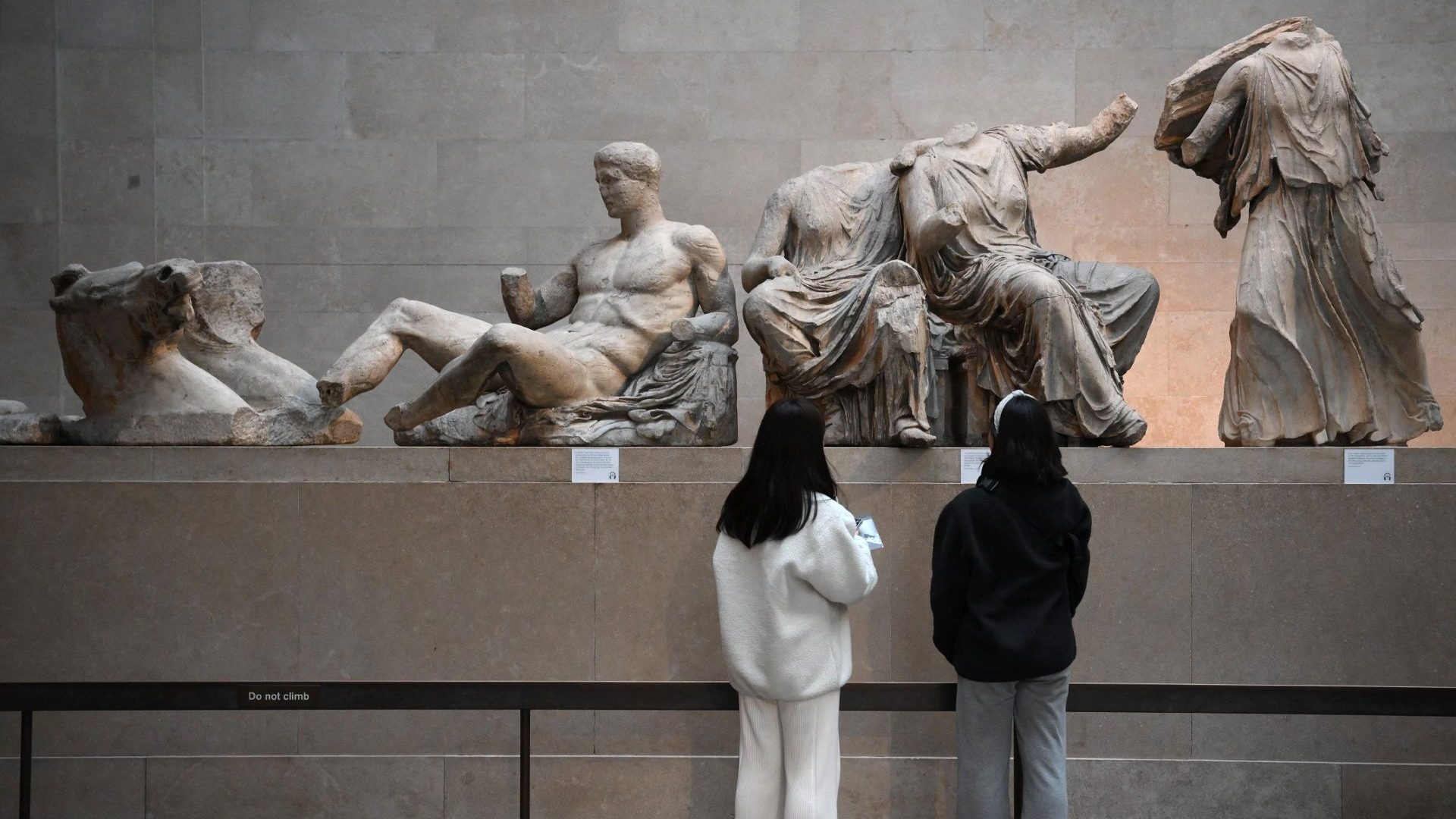Removing the sculptures from the Parthenon Temple found on the Acropolis site in Athens was not an easy task. The delicate sculptures on its frieze, metopes and pediments were not standalone works of art. They had to be sawn off using chisels and other metal instruments, which broke the façade from the rest of the large marble stones that formed the architectural parts of the temple.
The Parthenon was not just any building. It was – and still is – the most representative piece of architecture of classical Athens, created by the architects Iktinos and Kallikrates between 447BC and 432BC, in what is known as the Athenian Golden Age – a period when the city-state was at the height of its power.
In the third century, a fire set by pirates destroyed the roof and much of the interior. It suffered more damage because of a bombing by Venetian forces in 1687. Yet the Parthenon was ultimately destroyed by the Scottish-born British soldier and diplomat Lord Elgin when he removed the Parthenon marbles. The noble cause was to decorate his country house in Broomhall, Scotland.
Elgin used his ambassadorial position and the momentum of Napoleon’s campaign in Egypt to convince a lower Turkish official (kaymakam) to issue a letter to grant his team permission to make drawings and casts of the sculptures, and take any stones fallen on the ground. This letter has been portrayed as a firman – an edict written by an Ottoman or Middle Eastern ruler and authorised by the Sublime Porte, the government of the Ottoman Empire. But it was not.
I saw the Italian translation of the original Turkish document, which has not survived, in the London home of English historian William St Clair in July 2000. He stored it under his bed. When I saw it, I realised that this could not be a translation of a firman. The form, the language, the missing signatures… they all pointed towards a simple letter.
But what was most important of all was the fact that this document did not authorise Elgin to take away any sculptures by breaking them off the temple. What would be the point in authorising him to make drafts and casts if he could have the real thing? Later, the British Museum purchased St Clair’s document.
The team of artists appointed by Elgin to draw the sculptures and make the casts was headed by the painter Battista Lusieri. In the summer of 1801, while Elgin was in Constantinople, he received a letter from Lusieri reporting that he had lowered a sculpture from the high walls. Elgin was surprised by the news and wrote to Lusieri that he had exceeded Elgin’s “most ardent hopes”. The removal had come about with the use of bribes, threats, and the abuse of his ambassadorial authority. What was achieved was unexpected in the circumstances, even by Elgin himself.
The collection of marbles was so heavy that no one wanted to undertake the mission of shipping them to Scotland – it would be too risky. So Elgin decided to purchase a ship, the Mentor, and make the arrangements himself. The Mentor then sank in deep water off Kythera. The marbles were recovered, but until a new solution could be found for shipping them, they remained offshore for quite some time, suffering even more damage.
In 1811, foreseeing Elgin’s travails after the marbles were violently removed from the temple, Lord Byron wrote The Curse of Minerva – the goddess to which the Parthenon was dedicated by the ancient Greeks. On his return, Elgin got divorced from his wife, went bankrupt, saw the end of his public service life, and suffered the disintegration of his nose because of syphilis.
He desperately needed funds. He offered to sell the marbles to the British state, which to begin with was not interested. Finally, in 1816, parliament decided to buy the collection for £35,000. No real investigation of the matter took place. No official documents were submitted. Opposing voices were raised as to how the marbles had been acquired, but to no avail.
The Greek state gained its independence in 1831, and calls for the return of the Parthenon marbles began immediately. Greece then suffered a period of turbulence, but after the restoration of democracy in 1975, the minister of culture, Konstantinos Trypanis, set up a committee for the preservation of the Acropolis monuments and requested that Britain return the marbles to Greece in the context of this restoration. Britain declined. In 1983 Melina Mercouri (the former actress who was then Greece’s minister of culture) raised the issue with the British again.
“You must understand what the Parthenon marbles mean to us,” she said. “They are our pride. They are our sacrifices. They are the supreme symbol of nobility. They are a tribute to democratic philosophy. They are our aspiration and our name. They are the essence of Greekness”. The following year a petition was filed with Unesco.
In 1978, Unesco set up its Return and Restitution Intergovernmental Committee (ICPRCP). This was meant to deal with cases outside the scope of the 1970 Unesco Convention, since this could not work retroactively. The Parthenon marbles went on its agenda. In this context, negotiations are conducted every two years between Greece and Britain, but without success. Having participated in a number of those meetings, two things are clear.
First, Britain would like to remove the matter from the Unesco agenda. It says this is a matter between museums rather than countries. Second, Britain’s goodwill in considering the matter is goodwill on paper only, since this is the most long-lasting cultural heritage dispute found on the committee’s agenda that has not yet been resolved.
In one of the meetings between Greece and Britain, held at the British Ministry of Culture on April 23, 2009, I was unable to attend because I was pregnant with my third child. I was replaced by my husband, also a lawyer with experience in international disputes. This meeting was attended by Andy Burnham, then the UK’s minister for culture, Andy Burnham. He listened carefully to the Greek request with a very positive spirit and told the Greek delegation that he would go to Greece soon after to settle the matter.
My husband was positively surprised that a high-ranking British official would finally try to solve the issue. This alone was news, and he phoned me. I told him that there could be only one explanation; that he was new and had not had time to be briefed. During the next few months, Burnham vanished. At the next Unesco meeting in Paris, the British delegation confirmed my fears: “We are sorry, but last time there was no time to brief the minister.”
In 2013, Greece asked Irina Bokova, the then director general of Unesco, to invite Britain to mediation on the basis of the 2010 Unesco mediation and conciliation rules. It was an excellent opportunity for Britain to demonstrate its goodwill towards the resolution of the matter.
Britain replied to this invitation only 19 months later, on March 26, 2015: “We have seen nothing to suggest that Greece’s purpose in seeking mediation on this issue is anything other than to achieve the permanent transfer of the Parthenon sculptures now in the British Museum to Greece and on terms that would deny the British Museum’s right of ownership, either in law or as a practical reality. Given our equally clear position, this leads us to conclude that mediation would not carry this debate substantially forward.” In other words, Britain declined.
Recently things seem to have shifted. Kyriakos Mitsotakis, the Greek prime minister, brought up the issue again with Boris Johnson, then Liz Truss, and now Rishi Sunak. In January 2022, a Times leading article in favour of the return of the marbles to Greece came as a surprise, given that the newspaper had backed the British government over its refusal to return the marbles for almost 50 years.
A number of other British newspapers followed. In August last year, the Sunday Times conducted a survey that showed 78% of its readers in favour of the return of the marbles. Now George Osborne, chair of the British Museum, has entered into informal talks with the Greek government. It remains to be seen how much goodwill the word goodwill carries and whether the marbles will finally be returned to their country of origin.
It would be difficult for Greece though to accept any solution that does not find the Marbles completely reunited at the Parthenon. The marbles are parts of an architectural whole that was broken in order for them to be taken apart. This is an injustice that has continued for over two countries. Only Britain has the power, and we also hope now the will, to rectify it.
Professor Irini Stamatoudi is a lawyer at the supreme court in Athens and a law professor at the University of Nicosia, Cyprus










